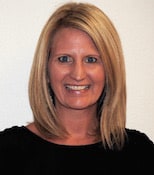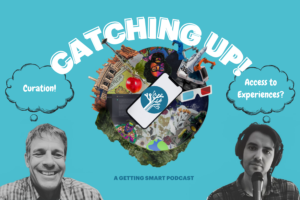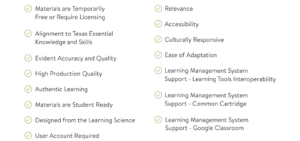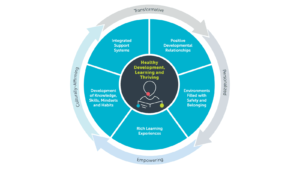10 Benefits of Teacher Developed Curriculum

When it comes to developing curriculum, who knows their students’ needs better than their teachers? After all, they are the ones who work directly with them on a daily basis, so can provide those outside of the classroom with much needed insight into the types of materials, activities and specific skills to include.
Literacy Design Collaborative (LDC) is a library of standards-aligned teacher-developed open tasks. It’s also a powerful collaborative lesson authoring environment. By contributing to the planning, creation, implementation and reflection process necessary to create strong curriculum, thousands of LDC teachers have promoted their own learning as well as student learning.
Following are ten teacher observations about the benefit of curriculum development using LDC and other options.

-
Promoting Complex Discussions
Cody Miller: 9th grade ELA instructor, P.K. Yonge Developmental Research School
“[My] students read, write and discuss complex ideas using a wide variety of ‘texts.’ And by using LDC, I’m assured that the tasks and writing align with rigorous state standards.”
2. Creating Lifelong Critical Thinkers
Liam Bayer: former teacher and administrator, Baltimore City Public Schools
“We no longer live in an industrial society, but a post-industrial one that is based on information, knowledge and the selling of services. Critical thinking and creativity are going to help our students tell their story and be ready.”
3. Creating Curriculum with Meaning and Purpose
Courtney Hanes: staff development specialist for grades 7-12, Riverside Virtual School
“By starting with the end, the unit project, and focusing on big picture questions while incorporating foundations, my students and I are able to make connections and see relevancy.”

4. Creating an Environment of Deep Thinkers
Kara Copher: 8th grade English teacher, Greenwood Junior High School
“LDC was the means that I was looking for to measure student growth and create an environment of deep thinkers. LDC became my ticket to becoming the teacher that I want to be.”
5. Introducing Students to Blogging While Improving Their Writing Quality
Susan Lucille Davis: 7th & 8th grade English teacher, Iolani School
“I have blended my previous experience with teaching writing as blogging with our [school’s] more traditional writing curriculum. My hope is that this draft curriculum can serve as a transition to more vibrant and engaging writing program for today’s students.”

6. Empowering Teachers Across All Content Areas to Teach Literacy
Abbie Mahaffey: Reading/Language Arts supervisor, Palmyra Area District
“LDC has united teachers in our district through a common goal…all teachers have become teachers of literacy. Our teachers are speaking the same language, reinforcing similar skills, and sharing ideas about how to support students as readers and writers”
7. Getting Students Rolling on Needed Coding Skills
Dave Guymon: public online middle school teacher
“Regardless of whether you use the SPRK curriculum with fidelity or customize it to fit your students’ needs, one thing is assured. Your students will learn the basic concepts of programming, robotics and math.”

8. Making Locally-Based Lesson Writing Fun
Angela Schoon: 4th grade, R.L. Stevenson Elementary School of the Arts
“We started working on writing our own fourth-grade LDC Module to accompany our study of entrepreneurs and inventors in Florida’s history. And we liked it! We finally saw how exciting it was to get to choose the activities based on the skills and standards.”
9. Improving Student Achievement
Ian Faley: former English teacher, Mystic Valley Regional Charter School
“Through the formal articulation of thought, we collaborate ideas, defend viewpoints and refine our understanding. This is the impetus behind many attempts to ‘write across the curriculum.’”
10. Supporting Teacher Planning Sessions For Faster Results
Christina Kostaras: middle school ELL teacher, Lilla G. Frederick Pilot Middle School
“Whether it’s getting feedback on curriculum, analyzing student work or digging deeper into a dilemma a teacher is facing, there are protocols designed to structure these important conversations. From this, I learned that authentic teacher-driven professional learning communities are a means for us to really improve adult learning and thus directly improve student learning.”
For more see:
- Collaborative Lesson Authoring Builds Teacher Capacity
- Literacy Design Collaborative Boosts Student and Teacher Learning
- My Powerful LDC Moment: Susan Haines, Arkansas
Stay in-the-know with all things EdTech and innovations in learning by signing up to receive the weekly Smart Update. This post includes mentions of a Getting Smart partner. For a full list of partners, affiliate organizations and all other disclosures please see our Partner page.









Terri McLemoore
There was a time when we, as educators were entrusted to write meaningful, strong lessons for our students. Strong teams were build through discussion and collaboration. Sadly, the plug and play, top down, district "pacing guide", approach has taken both autonomy and confidence in our ability to know what is best for our students away. Tasked with completing a year's curriculum before state testing in March, and threatened with punitive action if we deviate from the district calendar, there is little reteaching, reinforcement, or elaboration. Professional judgement and rich lessons-even those wonderful teachable moments that master teachers know make such a difference-gone. By the time the pendulum swings back, a whole generation of teachers may not have the confidence or skills to actually develop curriculum.